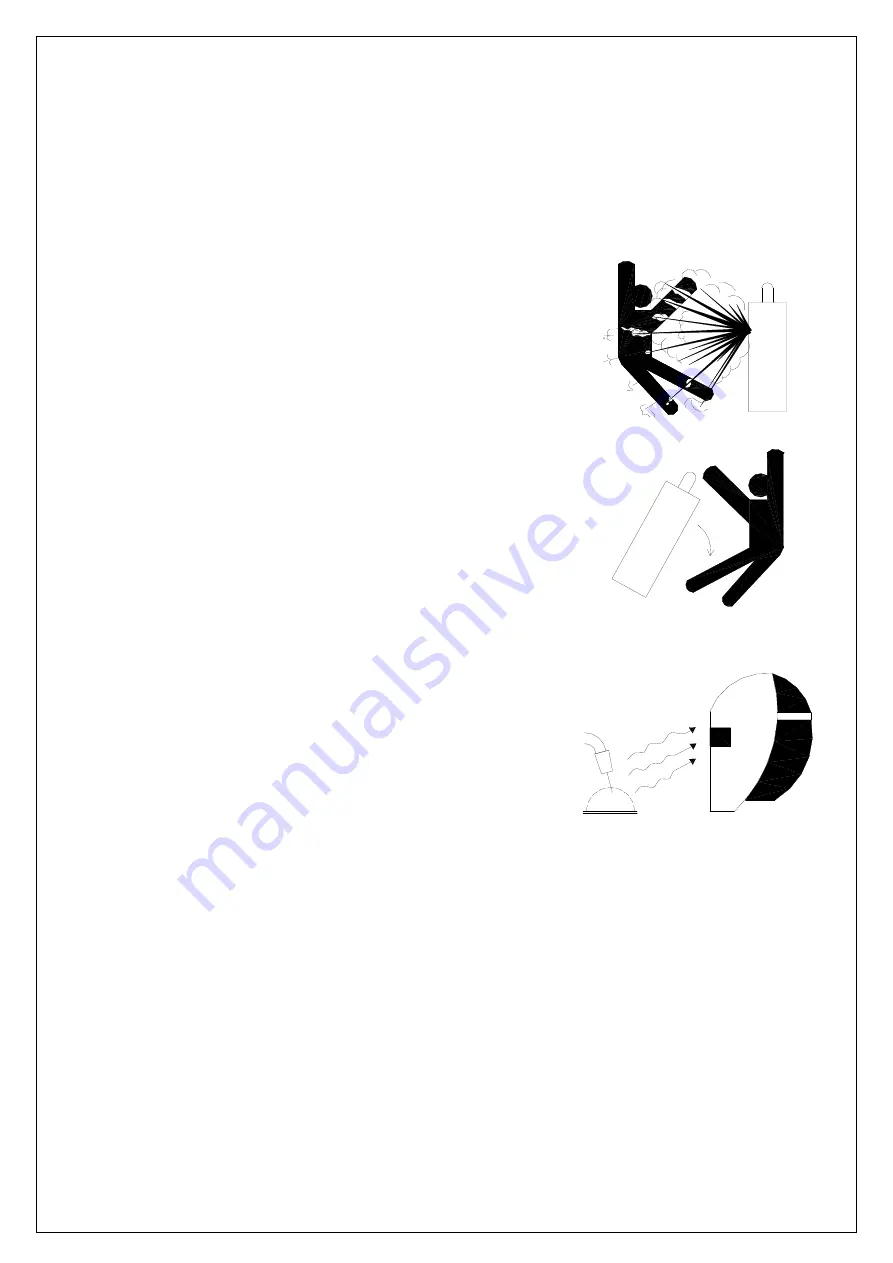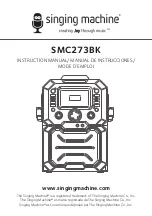
10
5.1.4.5 Connect Earth Clamp (22) to the work piece. Contact with workpiece must be strong contact with clean, bare metal,
with no corrosion, paint or scale at the contact point.
5.1.4.6 Connect the gas regulator (optional) and gas line to the inlet on the rear panel (11). If the regulator is equipped
with a flow gauge, the flow should be set between 8 – 15 L/minute depending on application. If gas regulator is not
equipped with a flow gauge, adjust pressure so gas can just be heard coming out of the torch conical nozzle (24). It is
recommended that gas flow is checked again, just prior to starting weld This can be done by triggering the MIG torch with
the unit powered up.
1)
Note:
Please wear welding helmet and protective clothing when MIG (GMAW/FCAW) welding
.
Connection of Shield Gas
Connect the inert gas hose, which comes from the wire feeder to the
copper nozzle of gas bottle. The gas supply system includes the gas
bottle, the air regulator and the gas hose, the heater cable should be
inserted into the socket of machine’s back and use the hose clamp to
tighten it to prevent leaking or air
‐
in, so that the welding spot is
protected.
Please note:
1) Leakage of shielding gas affects the performance of arc welding.
2) Avoid the sunshine on the gas cylinder to eliminate the possible
explosion of gas cylinder due to the increasing pressure of gas
resulted from the heat.
3) It is extremely forbidden to knock at gas cylinder and lay the
cylinder horizontally.
4) Ensure no person is up against the regulator, before the gas
release or shut the gas output.
5) For MIG
‐
250GW and MIG
‐
250GF, insert the power supply plug of
the heater into the 36 VAC (5A) socket on the back panel of the
welding machine.
6) The gas output volume meter should be installed vertically to
ensure the precisely measuring.
7) Before the installation of gas regulator, release and shut the gas
for several time in order to remove the possible dust on the sieve
to avail the gas output.












































